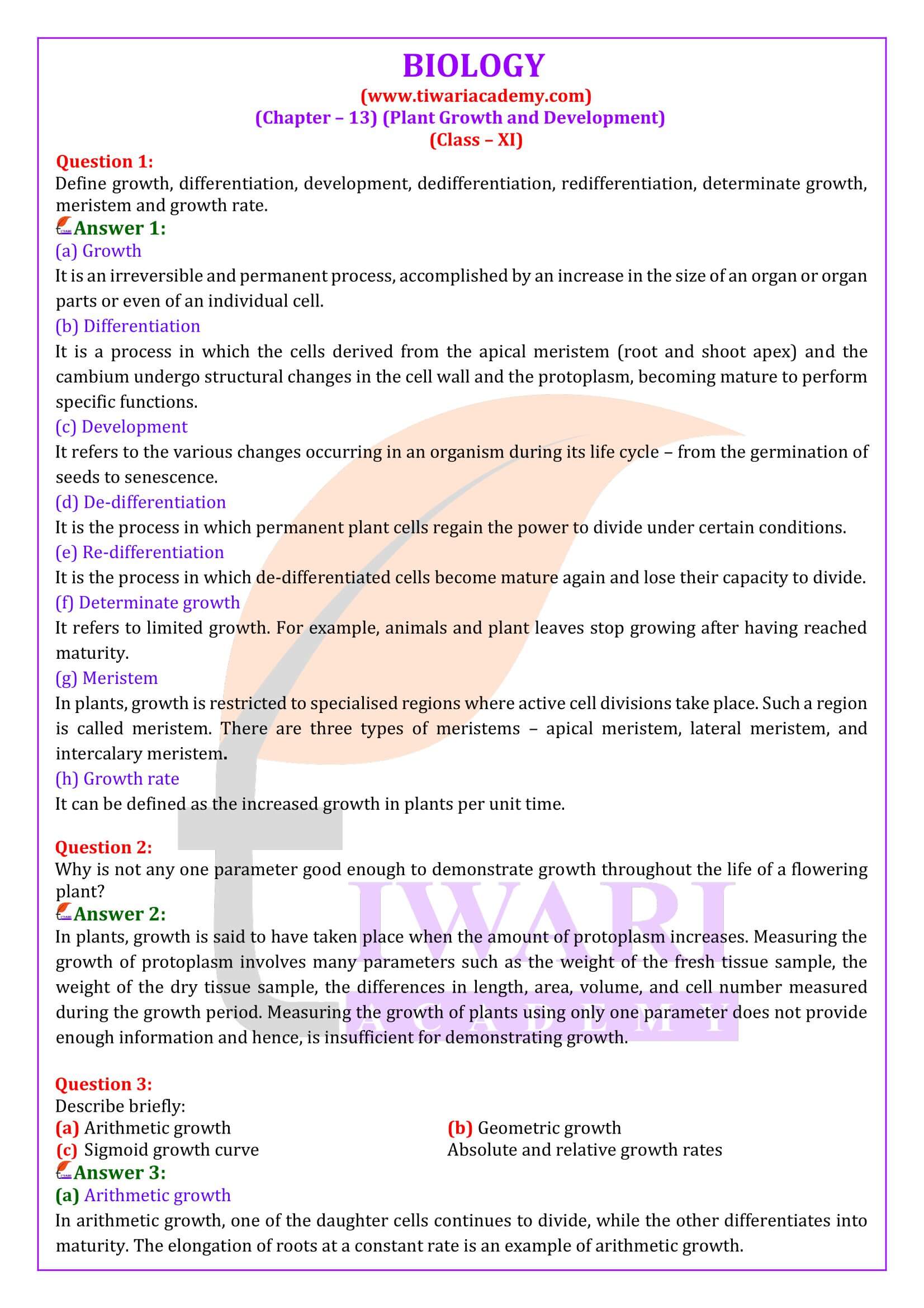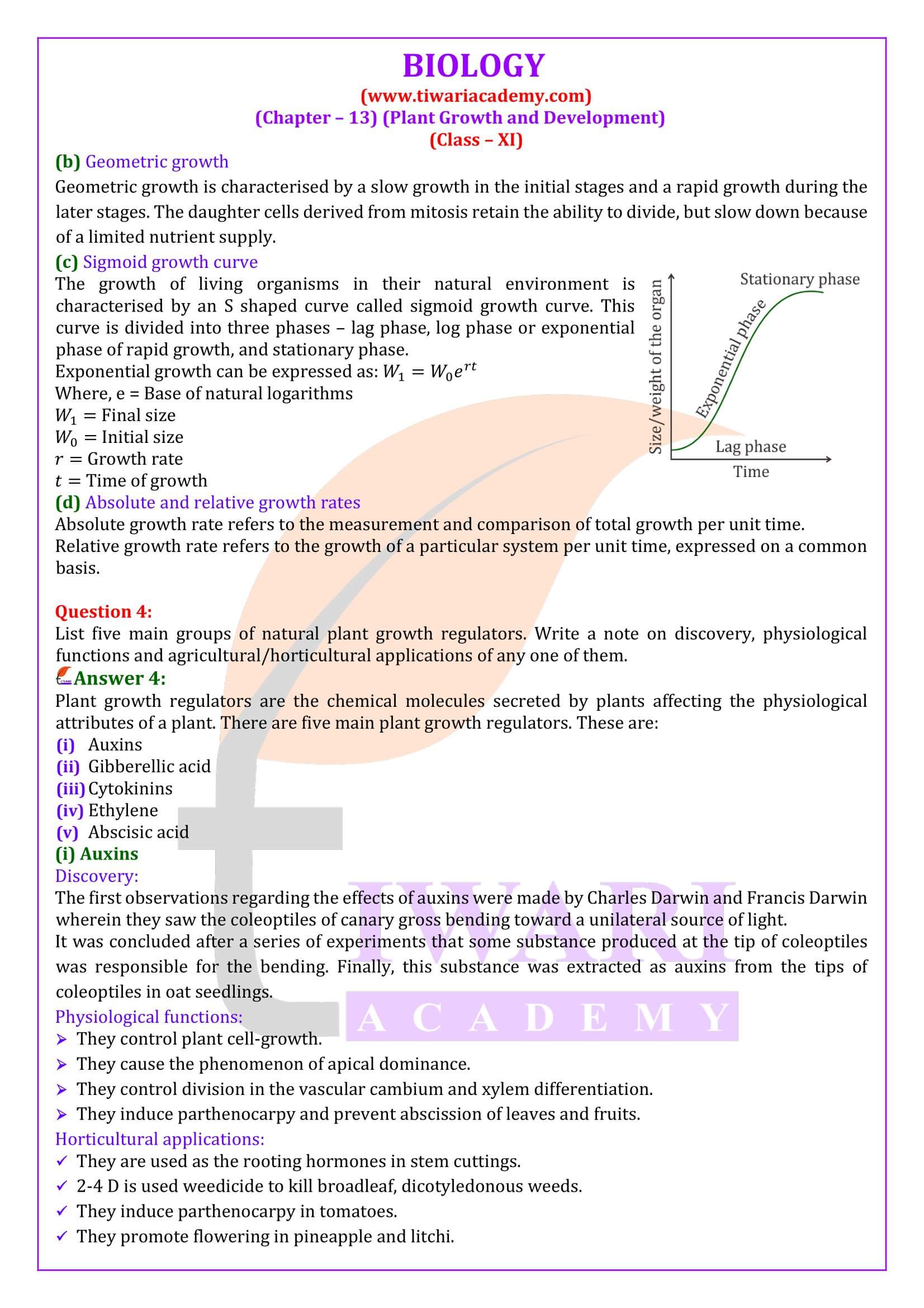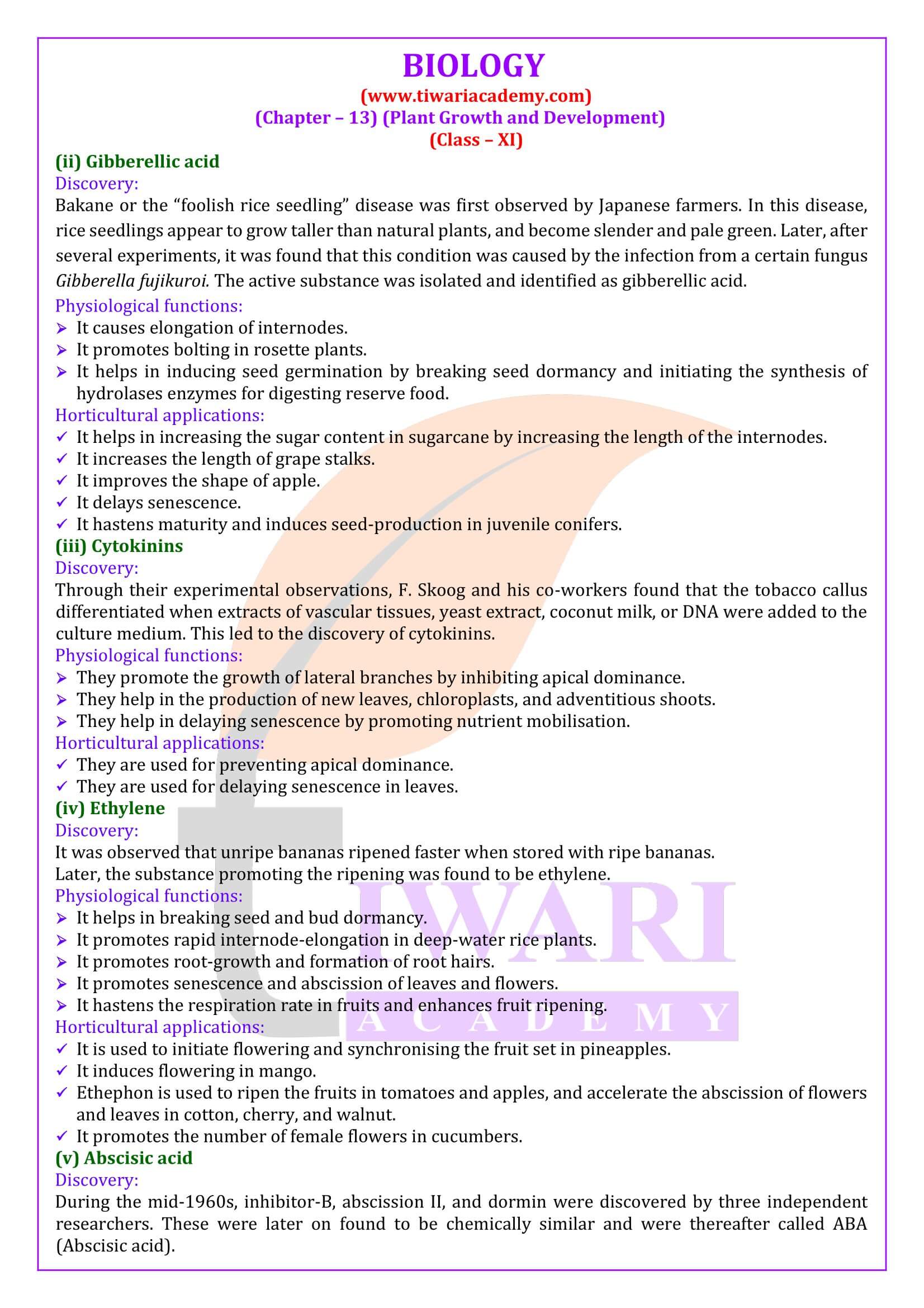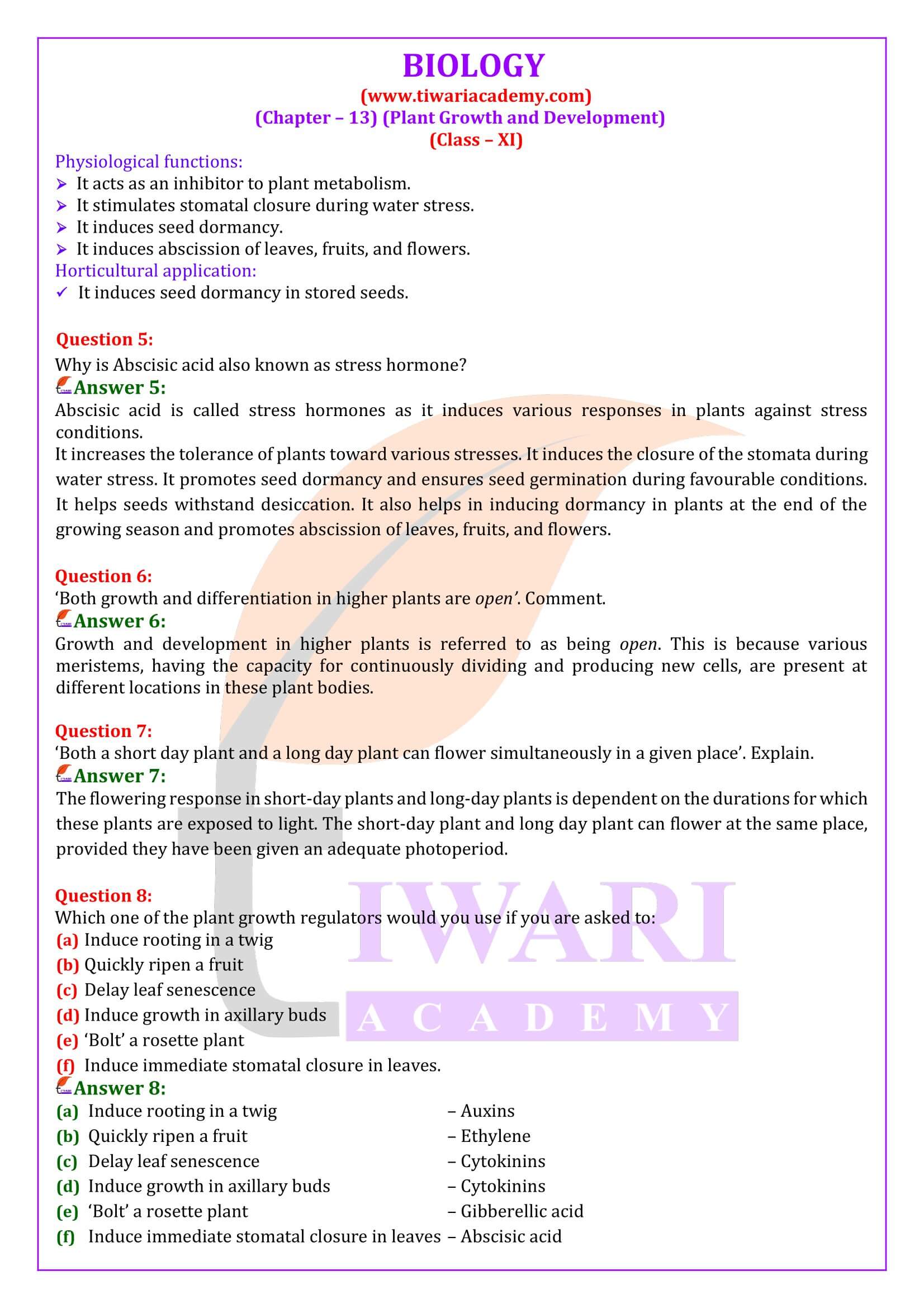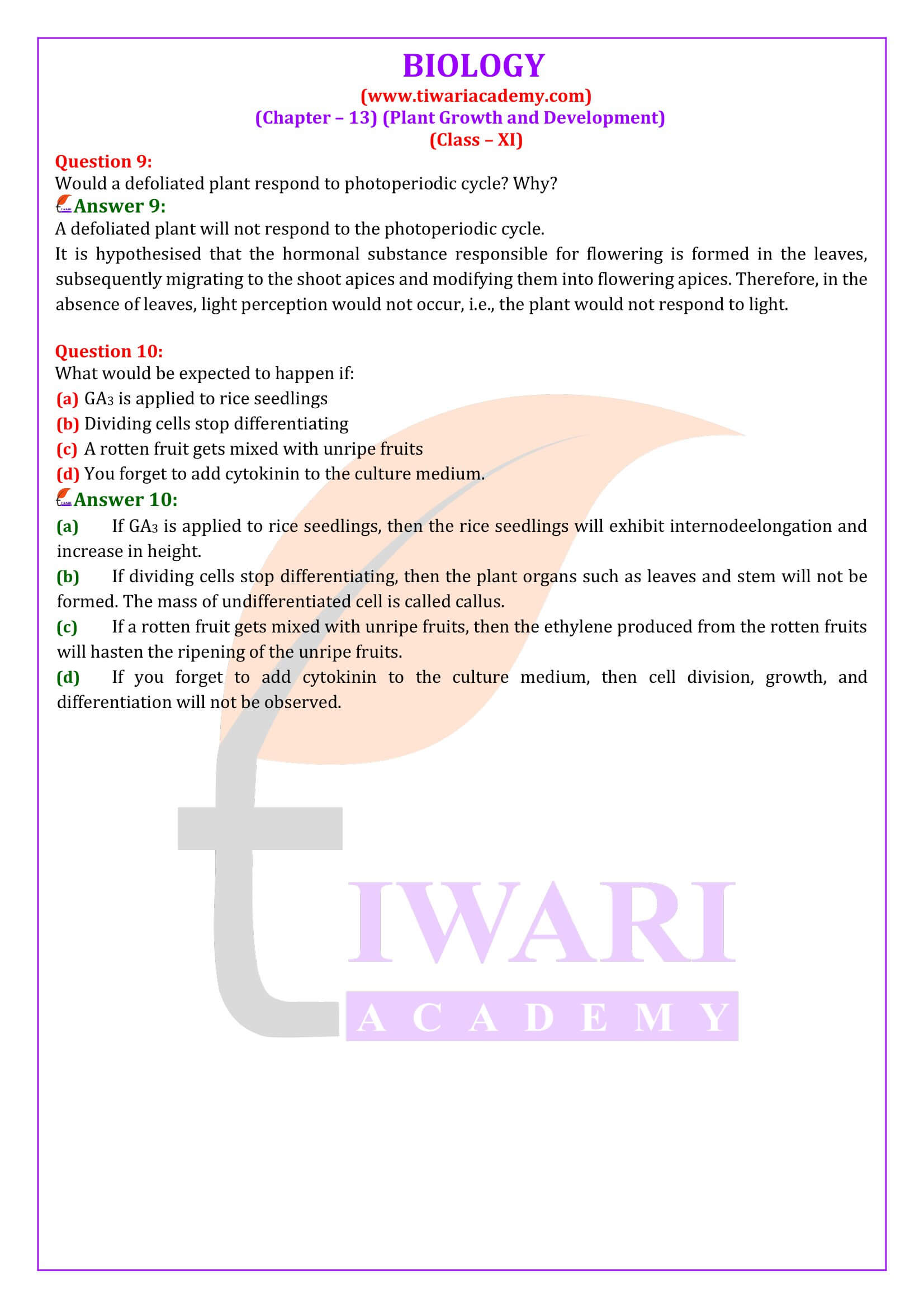NCERT Solutions for Class 11 Biology Chapter 13 Plant Growth and Development in Hindi and English Medium to Study online or download in PDF format free for new academic session 2025-26 all boards who are using NCERT Books for 2025-26 exams. Download NCERT Solutions and NCERT Solutions Offline Apps are applicable for all boards like UP, MP, CBSE, etc. who are following NCERT Books as course book. Join Discussion Forum to share your knowledge with others.
NCERT Solutions for Class 11 Biology Chapter 13
Class 11 Biology Chapter 13 Plant Growth and Development Solutions
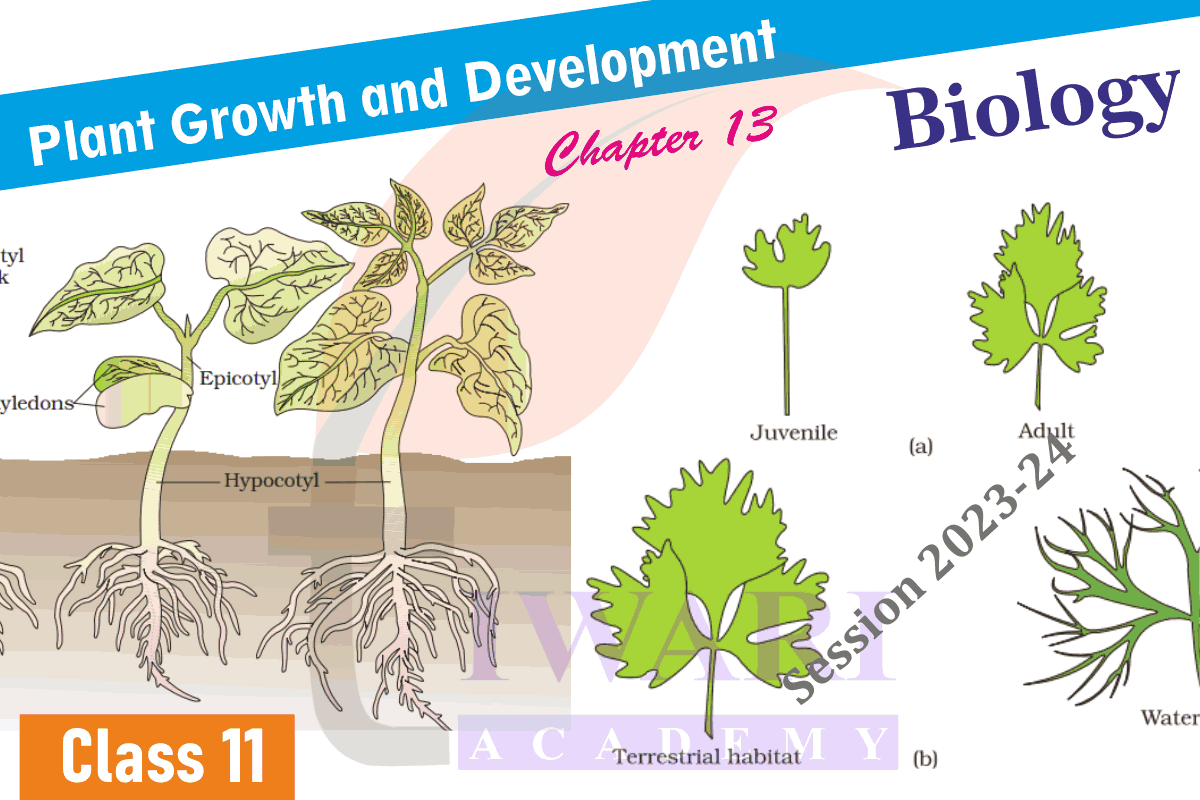
| Class: 11 | Biology |
| Chapter 13: | Plant Growth and Development |
| Content Mode: | PDF, Images and Text format |
| Academic Session: | Year 2025-26 |
| Medium Used: | Hindi and English |
Class 11 Biology Chapter 13 Solutions in English
NCERT Solutions for Class 11 Biology Chapter 13 in PDF format to free download in English Medium for academic session 2025-26. Join the discussion forum to ask your doubts related to NCERT Solutions and other CBSE contents. Download NCERT Books 2025-26 based on latest CBSE Syllabus. If you want to do class 12 without doing class 11, visit to NIOS board to know mare.
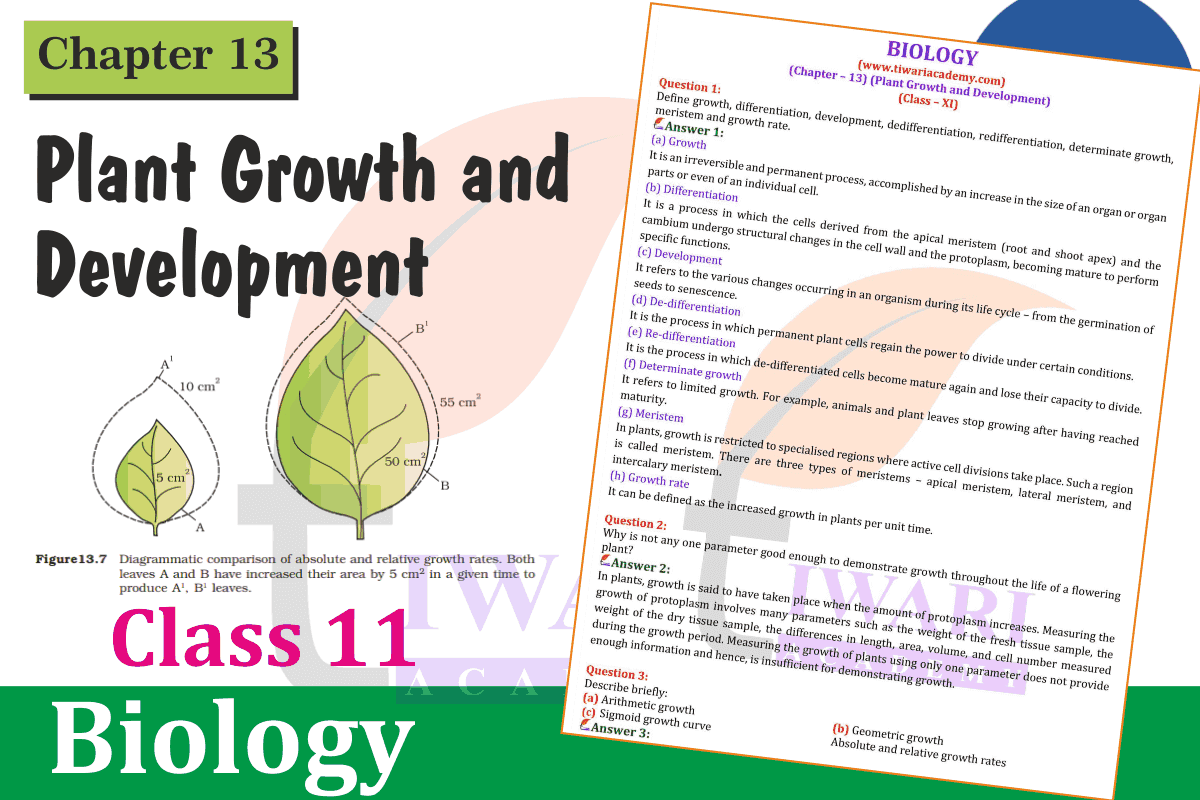
Important ABBREVIATIONS on Plant Growth and Development
IAA: Indole acetic acid
NAA: Napththalene acetic acid
ABA: Abscisic acid
IBA: Indole-3 butyric acid
2.4D: 2.4 dichlorophenoxy acetic acid
PGR: Plant growth regulator
Dormancy
1. A period of suspended activity and growth usually associated with low metabolic rate. Some, seeds undergo a period of dormancy and can germinate only after dormancy period gets over.
2. Phytochrome: A pigment, found in plants which control the light dependent developmental process.
3. Phytohormone: Chemicals secreted by plants in minute quantities which influence the physiological activities.
4. Sensecene: The last phase of growth when metabolic activities decrease.
5. Vernalisation: A method of promoting flowering by exposing the young plant to low temperature.
6. Growth: An irreversible permanent increase in size, volume and weight of an organ or its parts or even of an individual.
6. According to duration of exposure of plants to light, plants are divided in 3 categories:
i). Long Day Plants (LDP) – Plants which need exposure to light for period exceeding critical duration e.g., wheat, rice, cucumber.
ii). Short Day Plants (SDP) – Plants that need exposure to light for period less than the critical length e.g., Cabbage.
iii). Day Neutral Plants (DNP) – There is no correlation between exposure to light duration & induction of flowering e.g., Tomato.
SEED GERMINATION
The seed germinates only when favourable conditions for growth exists in the environment. In absence of favourable conditions it goes into a period of suspended growth or rest, called dormancy.
Abscission: Shedding of plant organs like leaves, flowers and fruits etc. from the mature plant.
Apical dominance: Suppression of the growth of lateral buds in presence of apical bud.
Quiescence: Non germination of a viable seed due to non-availability of proper environmental conditions.
Important Questions on 11th Biology Chapter 13
Define growth, differentiation, development, dedifferentiation, redifferentiation, determinate growth, meristem and growth rate.
(a) Growth It is an irreversible and permanent process, accomplished by an increase in the size of an organ or organ parts or even of an individual cell. (b) Differentiation It is a process in which the cells derived from the apical meristem (root and shoot apex) and the cambium undergo structural changes in the cell wall and the protoplasm, becoming mature to perform specific functions. (c) Development It refers to the various changes occurring in an organism during its life cycle – from the germination of seeds to senescence. (d) De-differentiation It is the process in which permanent plant cells regain the power to divide under certain conditions. (e) Re-differentiation It is the process in which de-differentiated cells become mature again and lose their capacity to divide. (f) Determinate growth It refers to limited growth. For example, animals and plant leaves stop growing after having reached maturity. (g) Meristem In plants, growth is restricted to specialised regions where active cell divisions take place. Such a region is called meristem. There are three types of meristems – apical meristem, lateral meristem, and intercalary meristem. (h) Growth rate It can be defined as the increased growth in plants per unit time.
Why is not any one parameter good enough to demonstrate growth throughout the life of a flowering plant?
In plants, growth is said to have taken place when the amount of protoplasm increases. Measuring the growth of protoplasm involves many parameters such as the weight of the fresh tissue sample, the weight of the dry tissue sample, the differences in length, area, volume, and cell number measured during the growth period. Measuring the growth of plants using only one parameter does not provide enough information and hence, is insufficient for demonstrating growth.
Describe briefly: (a) Arithmetic growth (b) Geometric growth.
(a) Arithmetic growth In arithmetic growth, one of the daughter cells continues to divide, while the other differentiates into maturity. The elongation of roots at a constant rate is an example of arithmetic growth. (b) Geometric growth Geometric growth is characterised by a slow growth in the initial stages and a rapid growth during the later stages. The daughter cells derived from mitosis retain the ability to divide, but slow down because of a limited nutrient supply.
List five main groups of natural plant growth regulators.
Plant growth regulators are the chemical molecules secreted by plants affecting the physiological attributes of a plant. There are five main plant growth regulators. These are: (i) Auxins (ii) Gibberellic acid (iii) Cytokinins (iv) Ethylene (v) Abscisic acid
What do you understand by photoperiodism and vernalisation? Describe their significance.
Photoperiodism refers to the response of plants with respect to the duration of light (i.e., period of day and night). On the basis of its response to the duration of light, a plant is classified as a short-day plant, a long-day plant, or a day-neutral plant. Short-day plants flower when they are exposed to light for a period less than the critical day-length (for example: Chrysanthemum). Long-day plants flower when they are exposed to light for a period more than the critical day-length (for example: radish). When no marked correlation is observed between the duration of exposure to light and the flowering response, plants are termed as day-neutral plants (for example: tomato). It is hypothesised that the hormonal substance responsible for flowering is formed in the leaves, subsequently migrating to the shoot apices and modifying them into flowering apices. Photoperiodism helps in studying the response of flowering in various crop plants with respect to the duration of exposure to light. Vernalisation is the cold-induced flowering in plants. In some plants (such as the winter varieties of wheat and rye and biennials such as carrot and cabbage), exposure to low temperature is necessary for flowering to be induced. The winter varieties of rye and wheat are planted in autumn. They remain in the seedling stage during winters and flower during summers. However, when these varieties are sown in spring, they fail to flower. Similar response is seen in cabbage and radish.
Why is Abscisic acid also known as stress hormone?
Abscisic acid is called stress hormones as it induces various responses in plants against stress conditions. It increases the tolerance of plants toward various stresses. It induces the closure of the stomata during water stress. It promotes seed dormancy and ensures seed germination during favourable conditions. It helps seeds withstand desiccation. It also helps in inducing dormancy in plants at the end of the growing season and promotes abscission of leaves, fruits, and flowers.
‘Both growth and differentiation in higher plants are open’. Comment.
Growth and development in higher plants is referred to as being open. This is because various meristems, having the capacity for continuously dividing and producing new cells, are present at different locations in these plant bodies.
‘Both a short day plant and a long day plant can flower simultaneously in a given place’. Explain.
The flowering response in short-day plants and long-day plants is dependent on the durations for which these plants are exposed to light. The short-day plant and long day plant can flower at the same place, provided they have been given an adequate photoperiod.
Would a defoliated plant respond to photoperiodic cycle? Why?
A defoliated plant will not respond to the photoperiodic cycle. It is hypothesised that the hormonal substance responsible for flowering is formed in the leaves, subsequently migrating to the shoot apices and modifying them into flowering apices. Therefore, in the absence of leaves, light perception would not occur, i.e., the plant would not respond to light.
Vivipary
It is the germination of seed while it is still attached to the parent plant and is nourished by it. e.g., Rhizophora and Sonneratia. As the germinating seed forms a seedling. It all down into the mud due to increase in weights. In the mud, lateral roots develops for anchorage.
Heterophylly: Occurrence of more than one type of leaves in plants e.g., larkspur, Coriander leaves of Juvenile plant are different in shape from mature plant.
